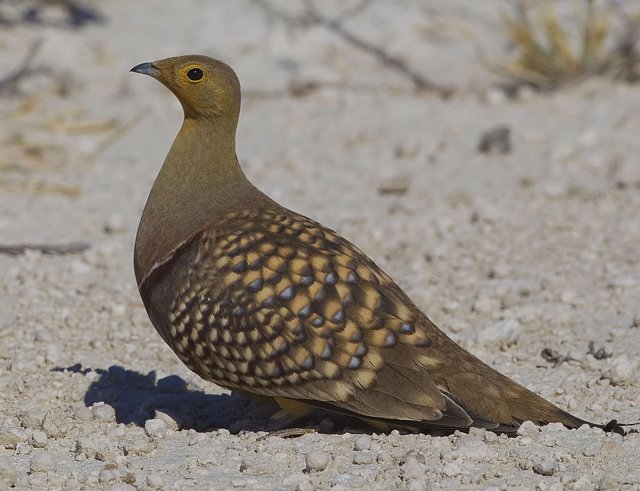12 Apr. (EUROPE PRESS) –
Scientists have deciphered how a species of bird from the deserts of southern Africa is able to transport water long distances for their chicks accumulated in the belly feathers.
These feathers absorb and retain water so efficiently that male Namaqua sandgrouse birds can fly more than 20 kilometers from a watering hole back to the nest and still retain enough water in their feathers for the chicks to drink and survive in the nests. scorching deserts of Namibia, Botswana and South Africa.
How do those pens work? While the scientists had inferred a rough picture, it took the latest microscopy tools and patient work with a collection of gangue feathers to unlock the unique structural details that allow the feathers to retain water.
The findings appear in the Journal of the Royal Society Interfacein an article by Lorna Gibson, professor of materials science and engineering and of mechanical engineering at MIT, and Professor Jochen Mueller of Johns Hopkins University.
Gibson and Mueller carried out their study using scanning electron microscopy, microcomputed tomography, and video imaging. They borrowed the belly feathers of the Namaqua Sandgrouse from Harvard University’s Museum of Comparative Zoology, which has a collection of specimens of about 80 percent of the world’s birds. reports MIT.
Bird feathers generally have a central shaft, from which smaller quills extend, and then smaller barbules extend. However, sandgrouse feathers have a different structure. In the inner part of the feather, the barbules have a helically coiled structure near their base and then a straight extension. In the outer area of the feather, the barbules lack a helical spiral and are simply straight. Both parts lack the grooves and hooks that hold the vane of contour feathers together in most other birds.
When wet, the coiled parts of the barbules uncoil and twist to lie perpendicular to the vane, producing a dense forest of fibers that can hold water through capillary action. At the same time, the barbules on the outer area curl inward, helping to retain water.
The microscopy techniques used in the new study allowed to measure the dimensions of the different parts of the feather. In the inner zone, the shafts of the quills are large and rigid enough to provide a rigid base on which the other parts of the feather deform, and the barbules are small and flexible enough so that the surface tension is sufficient to support them. fold the straight extensions into a teardrop shape. structures that retain water. And in the outer area, the axes of the spikes and barbules are even smaller, allowing them to wrap around the inner area, further retaining water.
While previous work had suggested that surface tension produced the water-retaining characteristics, “what we did was take measurements of the dimensions and do some calculations to show that that’s what’s really going on,” says Gibson. His group’s work showed that the varying stiffnesses of different parts of feathers play a key role in their ability to hold water.










![[Img #74662]](https://thelatestnews.world/wp-content/uploads/2024/12/Organisms-with-the-shortest-life-150x150.jpg)



![[Img #74662]](https://thelatestnews.world/wp-content/uploads/2024/12/Organisms-with-the-shortest-life-300x200.jpg)
